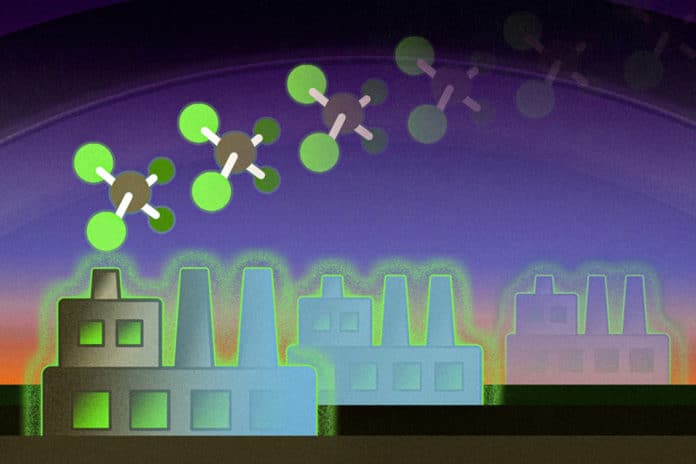Since 2013, annual emissions of a banned chlorofluorocarbon (CFC) including CFC-11, CFC-12, and CFC-113 have significantly increased. In 2018, it was reported that emissions of one of the most important ozone-depleting substances, CFC-11, had increased.
Primarily used as a foaming agent for building insulation, refrigerators, and other consumer products, CFC-11 could violate the Montreal Protocol, the international treaty designed to phase out the production.
When CFC molecules interact with the atmosphere, the chemicals can loft to the stratosphere, where they interact with ultraviolet light to release chlorine atoms. These potent agents erode the Earth’s protective ozone.
A new study by MIT scientists has reported that the global CFC-11 emissions are higher than previous studies report. It estimates that total emissions coming from new products are on 20 gigagrams a year for each of these molecules.
Scientists also identified new emissions of CFC-12 and 113.
CFC is an ozone-depleting chemical. In 2010, it was suggested that the chemical should be circulating at much lower concentrations. Estimating its concentrations in the atmosphere, scientists found that this ozone-depleting chlorofluorocarbon stays in the atmosphere for a shorter amount of time than previously estimated.
Lead author Megan Lickley, a postdoc in MIT’s Department of Earth, Atmospheric, and Planetary Sciences, said, “Because CFCs are such potent greenhouse gases and destroy the ozone layer, this work has important implications for the health of our planet.”
To estimate the CFCs concentration in the atmosphere, scientists developed a model that analyzes industry production of CFCs over time and how quickly various equipment types release CFCs over time. The model also estimates the amount of CFCs stored in banks.
Scientists inserted current recommended values for the chemicals’ lifetimes to calculate the concentrations of bank-derived CFCs that should be in the atmosphere over time. Subtracting these bank emissions from total global emissions should yield any unexpected, illegal CFC production.
In this study, scientists looked to improve the estimates of CFC lifetimes.
Lickley said, “Current best estimates of atmospheric lifetimes have large uncertainties. This implies that global emissions also have large uncertainties. To refine our estimates of global emissions, we need a better estimate of atmospheric lifetimes.”
Instead of considering the lifetime and emissions of each model separately, scientists considered CFC-11, 12, and 113 together. Through this, they wanted to estimate similar atmospheric processes that influence their lifetimes (such as winds). These processes have been modeled by seven different chemistry-climate models, evaluating the gas’s atmospheric lifetime over time.
After including these chemistry-climate modeled lifetimes into a Bayesian simulation model of production and emissions, scientists could reduce the uncertainty in their lifetime estimates. They calculated the lifetimes for CFC-11, 12, and 113 to be 49 years, 85 years, and 80 years, respectively, compared with current best values of 52, 100, and 85 years.
As these estimates are shorter than previously recommended values, this signifies that emissions are likely higher than what the best estimates have been.
When scientists updated the estimates of CFC bank emissions and compared them with total global emissions for 2014 and 2016, they detected new, unexpected emissions on the order of 20 gigagrams, or 20 billion grams, for each chemical.
These new CFC emissions are equivalent to the total yearly greenhouse gas emissions emitted by the United Kingdom.
Journal Reference:
- Lickley, M., Fletcher, S., Rigby, M. et al. Joint inference of CFC lifetimes and banks suggest previously unidentified emissions. Nat Commun 12, 2920 (2021). DOI: 10.1038/s41467-021-23229-2
